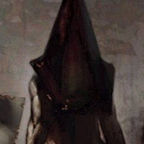“The Planet’s Dyin’, Cloud!”: The Lasting Relevance of Final Fantasy VII
Squaresoft’s 1997 smash hit role-playing game Final Fantasy VII opens with a bombastic siege in which the player, known as Cloud Strife, invades the energy reactors of the city Midgar. The reactors, run and owned by the menancing Shinra Electric Power Company, are harvesting what’s known as “Mako Energy”, a literal life source of the planet. Upon the player entering an elevator, major character Barret Wallace explains why the mission is taking place, remarking “The planet’s dyin’, Cloud!”.
Final Fantasy VII is a Japanese role-playing game (or JRPG) released in 1997 for the first PlayStation console. VII was noted for being one of the large breakthrough hits in its genre worldwide, and is often ranked as one of the greatest video games of all time. And to most people who play role-playing games, it’s not hard to see why, with a stellar combat system supplemented by easy to learn yet deeply layered mechanics, a near magnum opus soundtrack from Nobuo Uematsu, and a cinematic presentation which pushed the envelope for both JRPGs and video game at the time. However what tends to really be VII’s biggest strength is its story.
Final Fantasy VII puts the players in the boots of ex-mercenary Cloud Strife, a young, depressed man who’s agreed to help out eco-terrorist group “AVALANCHE”, spearheaded by hot-tempered Barret Wallace and his childhood friend Tifa Lockhart. AVALANCHE’s mission is to destroy the expanding Shinra Inc., an energy industry giant which has blurred the line between business and government, effectively shadowing as a ruling power of the city of Midgar. Shinra specializes in the extraction of “Mako energy”, a literal life source of the planet. The game’s story centers around an area known as “The Promised Land”, an area untouched by civilization and is said to be brimming with Mako energy. The story then becomes a race against time in stopping Shinra’s plans to take The Promised Land for themselves, and stopping a super soldier entity known as Sephiroth in order to save the planet from assured destruction. The story of Final Fantasy VII is no doubt what propelled this entry to be the most iconic in its series. But what makes the story even more engrossing is it’s relevance 22 years later.
One of the biggest themes that Final Fantasy VII conveys is its anti-corporate, anti-government take on saving the environment. It spares little expense in conveying the damage that the mega-corporations cause on the world around the player, including the city of Midgar being surrounded by barren, dead grassland as the player leaves the city for the first time, villages such as the appropriately named “Rocket Town” living around Shinra Inc.’s abandoned space station and the town of “Corel” now being a destroyed, crudely put together village of survivors after one of Shinra’s “Mako Reactors” exploded and Shinra tried to kill survivors to prevent them from spreading stories about the reactors exploding. This serves as one of the main motivations for character Barret Wallace to go against the Shinra corporation, along with many of the main characters having their own motives. As mentioned above, The Promised Land is one of the plot’s main devices, as Shinra wants to take it and use it for their own gain. 22 years later, we still see these same things happen worldwide, with large corporations hurting the environment through over-consumption of resources, destroying nature to expand and exploiting certain areas of the world to access their natural resources.
Along with it’s pro-environmental activist theme, the game notes the dangers of blurring the lines of corporations and government. Shinra effectively is the main ruling power of Midgar, and the largest power in Gaia, the planet the game takes place on. With no larger body of power and Shinra basically absorbing whatever government existed, there is no one to regulate the company’s overuse of the planet’s energy, allowing Shinra to take as much as they want, when they want, and wherever they want. These fears are still reflected today, with governments bowing to lobbyists and acting in the favor of big corporate giants instead of what their people want.
Final Fantasy VII also proposes and presents many themes and statements, including but not limited to the morality of extreme activism, arguing the necessity of said activism in the face of a major ruling party, and the effects of trauma on mental health and the people afflicted. For a game released in 1997, the messages are still very relevant in today’s world, perhaps more so than when it came out. The Final Fantasy series is no stranger to tackling heavy subjects or asking deeper questions, with Final Fantasy X addressing racism and the cycle of violence and Final Fantasy IX asking if it’s better to live than have lived at all. Final Fantasy VII however happened to age very well with the subject it tackles, and 22 years later it manages to present an important message that most games now would shy away from.
Looming in the distance however, is the remake of Final Fantasy VII. Scheduled for a release in 2020 as of the time of writing, Final Fantasy VII is receiving it’s heavily demanded remake. With a different gameplay style and updated graphics, the textbook classic has never looked better. But what is most exciting in my opinion, is allowing a new, larger audience to experience this ever-so relevant cautionary tale in a world which it’s needed most.
